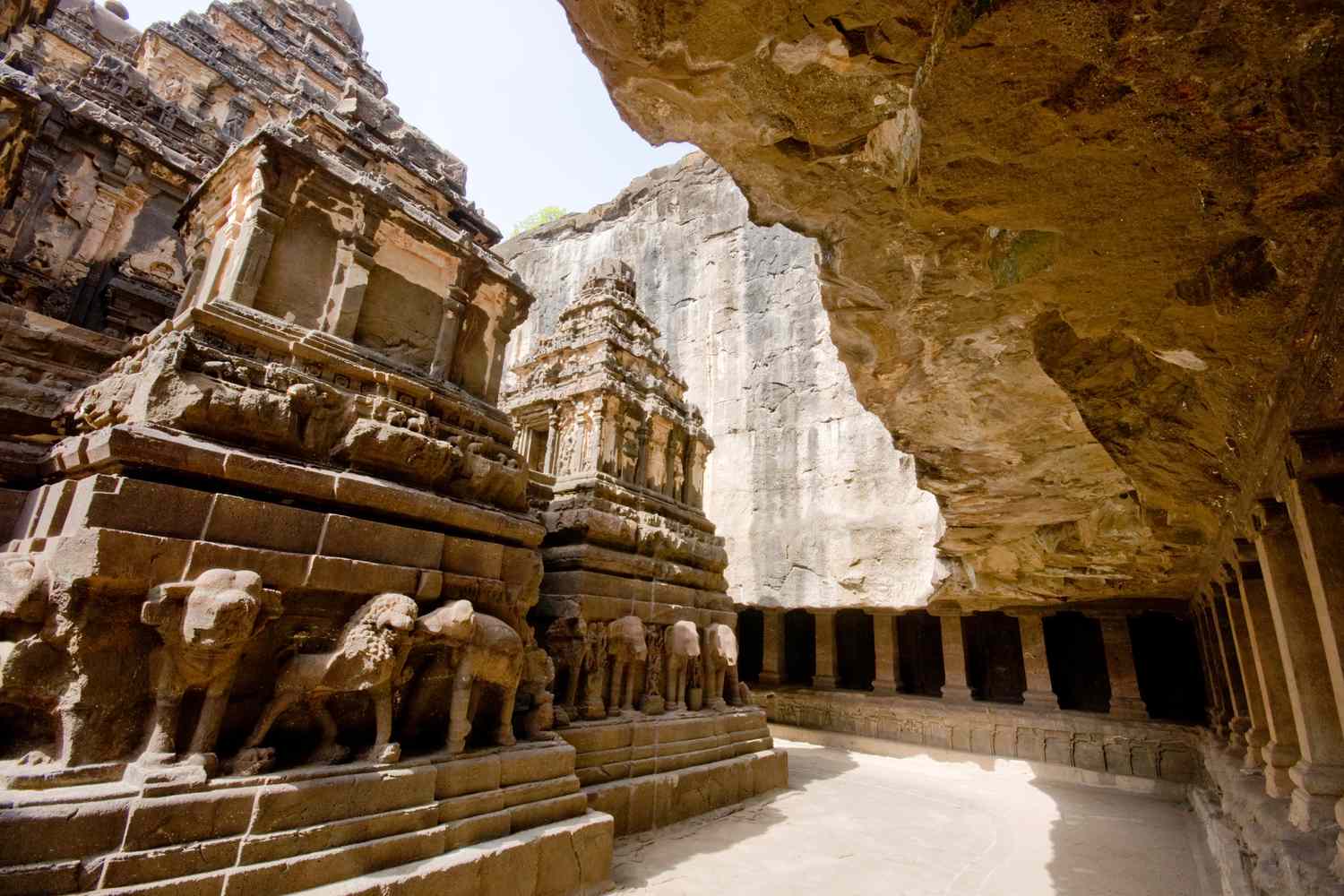Maharashtra is home to some of India’s most breathtaking ancient cave complexes, each offering a glimpse into the rich cultural and artistic heritage of the region. This guide will delve into three prominent cave sites: Ajanta, Ellora, and Elephanta, highlighting their history, architecture, and significance.
Ajanta Caves
History and Significance
The Ajanta Caves, located in the Aurangabad district of Maharashtra, date back to the 2nd century BCE to about 480 CE. These caves are renowned for their exquisite rock-cut sculptures and paintings, depicting scenes from the life of Buddha and various Jataka tales. Ajanta served as a center for Buddhist monks who lived, worshipped, and created these masterpieces in the monsoon retreat season.
Architecture and Art
The Ajanta Caves consist of 30 rock-cut caves, including monasteries and prayer halls (chaityas and viharas). The caves are carved into a horseshoe-shaped cliff overlooking the Waghora River. The interiors of the caves are adorned with intricate sculptures and vibrant frescoes, showcasing a blend of Indian and Buddhist artistic styles. The famous Cave 1 features the stunning Buddha image in a preaching posture, surrounded by elaborate decorative motifs and scenes from the life of Buddha.
Highlights
- Cave 1: Known as the Mahachaitya or Great Stupa, it is the largest and most impressive cave at Ajanta, featuring a colossal statue of Buddha.
- Cave 2: Famous for its exquisite paintings depicting the Bodhisattvas and other celestial beings.
- Cave 26: Showcases intricate carvings and a beautiful shrine with a seated Buddha.
Ellora Caves
History and Significance
The Ellora Caves, located near the city of Aurangabad, represent a remarkable fusion of Buddhist, Hindu, and Jain religious art and architecture. These caves were excavated between the 6th and 10th centuries CE under the patronage of various dynasties, including the Rashtrakutas and Chalukyas. Ellora is a UNESCO World Heritage Site and consists of 34 caves, each dedicated to a different deity or religious theme.
Architecture and Art
Ellora’s caves are divided into three groups: Buddhist (Caves 1-12), Hindu (Caves 13-29), and Jain (Caves 30-34). The most famous cave at Ellora is Cave 16, also known as the Kailasa Temple. Carved out of a single rock, it is the largest monolithic structure in the world. The temple complex features intricate carvings, including depictions of gods, goddesses, and mythological scenes.
Highlights
- Cave 16 (Kailasa Temple): A masterpiece of rock-cut architecture, dedicated to Lord Shiva. It is surrounded by a courtyard with smaller shrines and sculptures.
- Cave 10 (Vishwakarma Cave): Known for its intricate carvings of dwarapalas (guardians) and celestial beings.
- Cave 32 (Indra Sabha): Notable for its beautifully painted ceiling depicting scenes from Hindu mythology.
Elephanta Caves
History and Significance
The Elephanta Caves, located on Elephanta Island in Mumbai Harbor, date back to the 5th to 8th centuries CE. These caves are dedicated to Lord Shiva and represent a significant example of rock-cut architecture and sculpture. The island was originally named Gharapuri (City of Caves) and was later renamed Elephanta by the Portuguese, who found a large stone elephant statue near the entrance.
Architecture and Art
The main cave at Elephanta (Cave 1) consists of a large hall with a central shrine dedicated to Shiva in his form as Maheshamurti. The most famous sculpture in the cave is the colossal Trimurti, a three-headed bust of Shiva depicting him as the creator (Brahma), preserver (Vishnu), and destroyer (Mahesh).
Highlights
- Trimurti Sculpture: The iconic three-headed sculpture of Shiva, known as Trimurti, is the centerpiece of Elephanta Cave 1.
- Ardhanarishvara Sculpture: Another notable sculpture depicting Shiva and his consort Parvati as a single androgynous form.
- Mahayogi Shiva: A depiction of Shiva in a deep meditation posture, illustrating his ascetic and yogic aspects.
Conclusion
The ancient caves of Ajanta, Ellora, and Elephanta stand as testament to Maharashtra’s rich cultural heritage and artistic achievements. Each cave complex offers a unique glimpse into the religious beliefs, architectural prowess, and artistic expressions of ancient India. Whether you’re drawn to the serene beauty of Ajanta’s paintings, the architectural marvels of Ellora’s Kailasa Temple, or the mystical allure of Elephanta’s sculptures, these cave sites promise a journey through history unlike any other.

